The sciatic nerve extends from the lower back to the heel of the foot and is the largest of the body. When the sciatica gets irritated or compressed, exercises such as the bridge or plate are good for relieving pain.
What happens is that physical exercise can improve strength, mobility, and functional disability. That is why, on this occasion, we want to share the best stretches and practices for sciatica, so that you take them into account from the first sign of pain.
Causes and symptoms of sciatica
Although the term is usually used for back pains in general, we talk about sciatica when the sciatic nerve gets irritated or compressed. Among its symptoms the pain in the lumbar area that radiates toward the legs, sensory loss, and weakness. Sciatica usually appears for conditions such as the lumbar disc hernia. However, it can also be caused by spinal stenosis, spondylosis, or inflammation of the lumbar muscles.
In such cases, it is always recommended to go to a doctor to indicate specific treatment or sometimes sciatica pills can be given. In addition, as a complement to the therapy to be given to the doctor, the exercises and stretches we will mention below can be taken into account.
What Exercises to Take the Pain Out of Sciatica?
Because of the difficulties it causes in the movement, some might think that rest is the best way to alleviate it. However, according to a Spine article, the practice of certain physical exercises is recommended as part of the treatment of sciatica pain.
These not only help gain strength to prevent the recurrence of symptoms but also promote the healing of soft tissues. Even doing sciatica exercises during pregnancy can mitigate the discomfort and limitations it generates according to a review of the Scandinavian Journal of Medicine & Science in Sports
Then we’ll indicate some of the pain exercises of the sciatic nerve. Still, you must talk with a doctor before, as the type of activity depends on the pain and the cause that produces it.
1. Exercise for lumbar
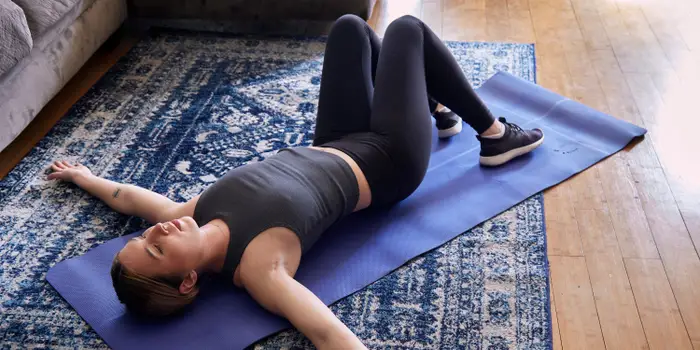
The next move, you can take it into account for all types of lumbar pains. In this way, you can stretch the back area and, at the same time, strengthen the abdominal muscles.
How do you do that?
- On a yoga mat, lie face up and stretch my arms to the sides, palms against the ground.
- Then put your knees together and start lowering them to the right side. When making the move, make sure you don’t bend the torso.
- Then, upload them and go down to the left side.
- Hold the position a few seconds on each side and do it repeatedly from side to side.
Rot your hips as much as you can, as long as you don’t feel discomfort.
2. Bridge
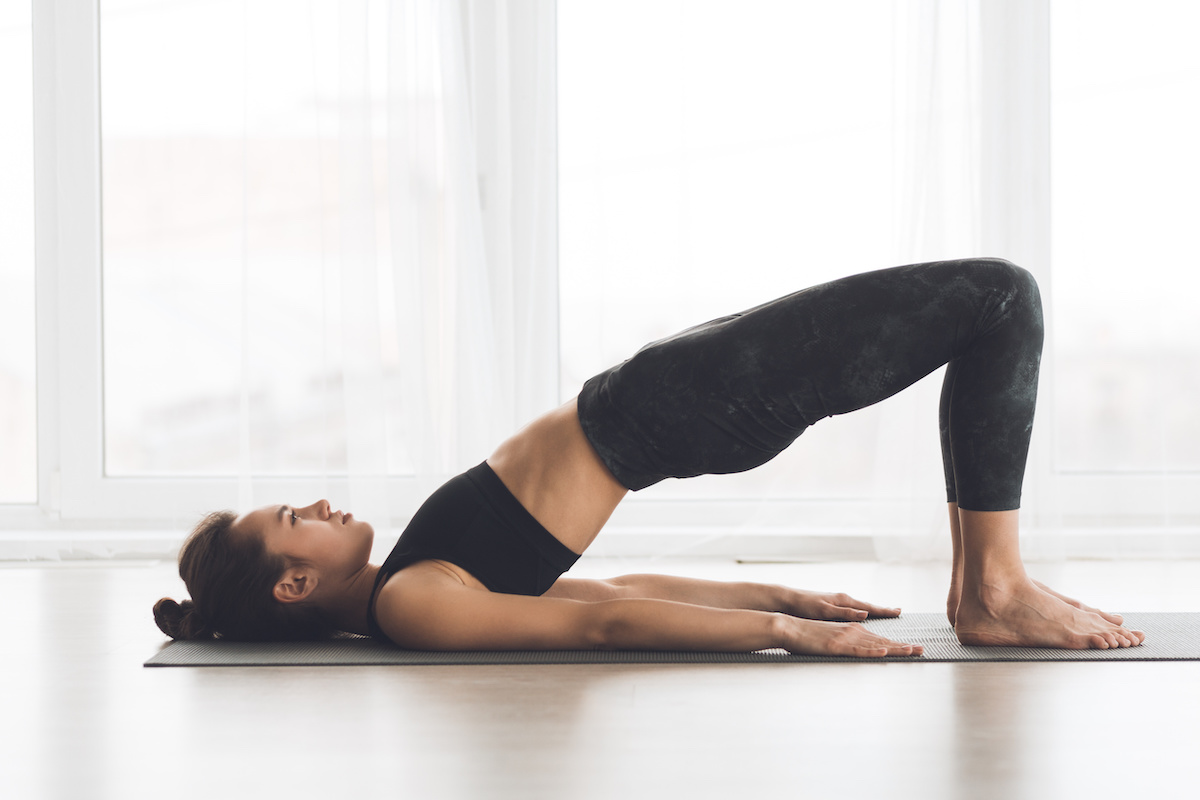
Among the strengthening exercises for the sciatica, the bridge is one of the most chosen. According to the International Journal of Clinical and Experimental Medicine, these kinds of exercises are designed to improve the stability of the spine and relieve pain.
How do you do that?
- Lie face up and rest your feet on the ground.
- Then, with your shoulders and head leaning on the floor, lift your hip and contract your abdomen.
- Hold the position for 30 seconds and go back to the initial pose.
- Repeat five times.
3. Bridge variant
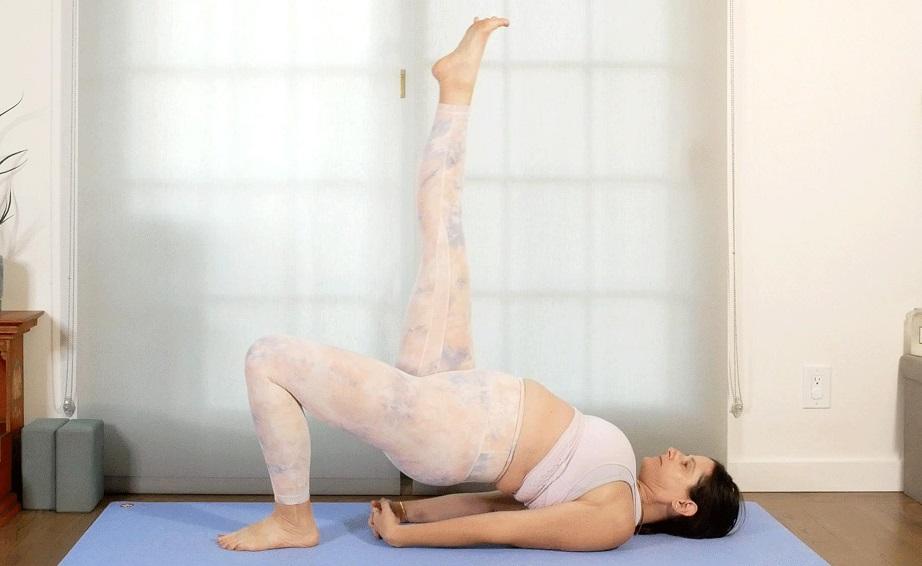
If the previous movement is easy for you to perform and you don’t feel discomfort, you can continue with this one. Anyway, the idea is that at no time will it cause you back pain. Otherwise, it suspends the exercise.
How do you do that?
- Starting from the previous position, stretch one of the legs.
- Then elate it as much as you can, without generating pain.
- Hold the posture for 10 seconds and do the same with the other leg. Repeat 10 times in total.
Remember not to raise your hips too much while you lift your leg.
4. Cat-Cow

This is a sensorimotor exercise that is usually recommended for lumbar pain that radiates to other areas of the body. It’s very easy to do and can help you strengthen your back. We show you.
How do you do that?
- Mouth down, rest your hands and knees on the floor.
- First, keep a relaxed position, looking in front with your back straight.
- Then, make the cat movement as in the image. To do this, contract the pelvis and carry your head down.
- Hold that position for about 15 seconds, relax your back, and repeat 10 times.
5. Superman
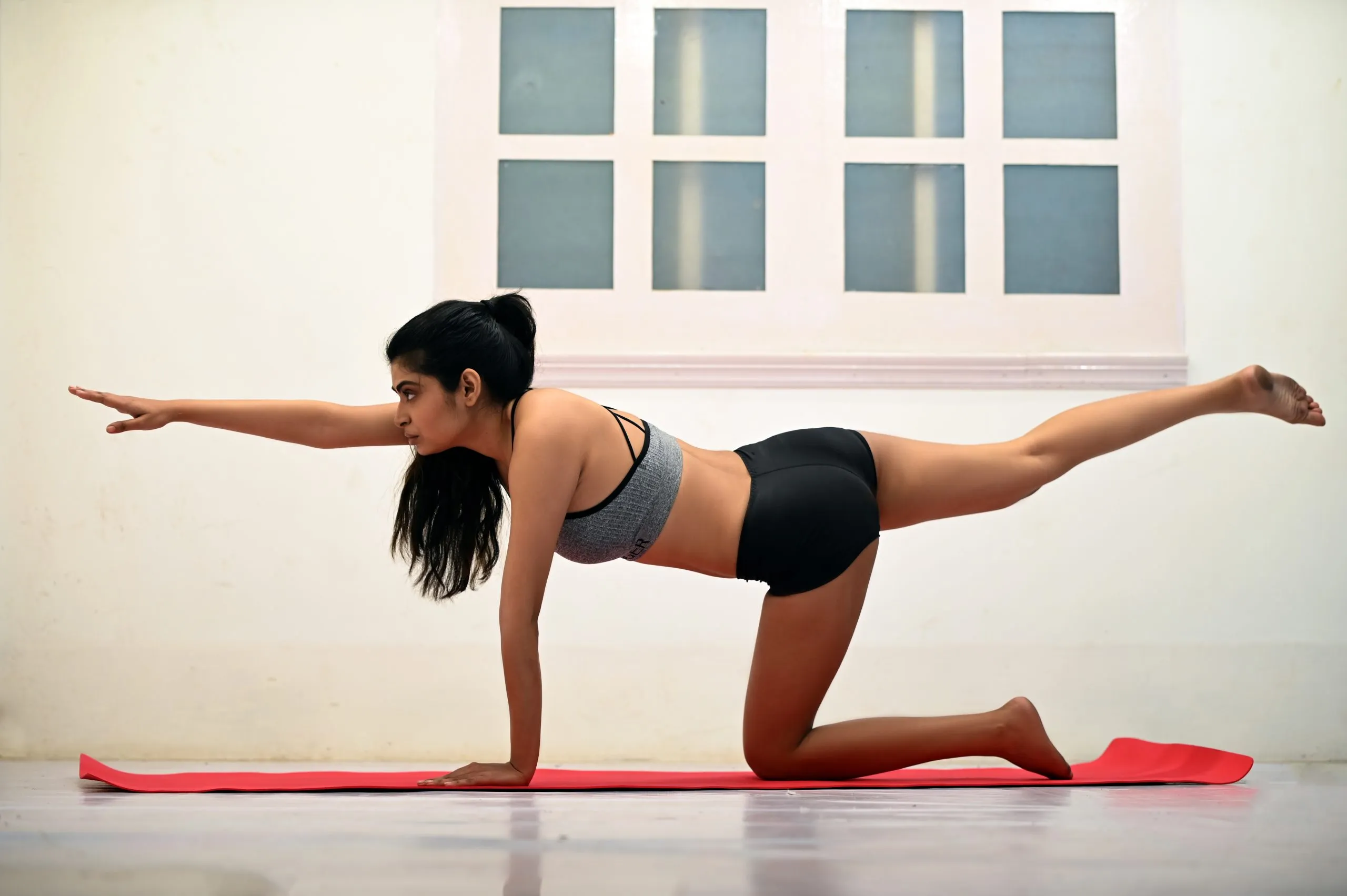
It may seem difficult at first, but this lumbar stabilization exercise will help you stretch the whole body and gain strength. Especially in the lumbar and abdominal area. Keep in mind that you should not stand your back, but should remain relaxed.
What are you supposed to do?
- Put yourself in four supports.
- Then stretch an arm and the opposite leg in unison. Try to get both parallel to the floor.
- Hold the position for 10 seconds and go back to the starting position. Rest for 10 seconds.
- Do the same with the other arm and leg. Repeat 15 times on each side.
If you have a lot of pain or lack of mobility, you can start by stretching your arm alone and then just the leg, until you manage to make both movements at once.
6. Lmbar extension
This exercise is good for promoting the lumbar movement. Now, if your mobility is limited, you can place a pair of pillows under your hip. In any case, it is important to note that you should not feel pain.
How do you do that?
- Lie face down with your hands under your shoulders.
- Inhale, lifts the torso alone and supports the forearms on the ground.
- Hold that posture for a few seconds and exhale as you go down slowly.
- Repeat 10 times.
As the torso goes up, keep your hips leaning on the floor and your buttocks relaxed.
7. Abdominals
Like the bridge, this is another lumbar stabilization exercise for schic nerve pain that, as a study in Medicine points out, focuses on muscle strength and strength. In turn, it improves neuromuscular control.
How to carry them out?
- Lie face up with one flexed leg and the other extended. Place the palms of your hands under your hips.
- Then lift your head and shoulders slowly.
- Hold that position for a couple of seconds and start again. Repeat 10 times.
In case you don’t present pain, when you raise your head, you can carry your arms to your knees.
8. Subpine March
Another lumbar strengthening exercise is known as supine gear. This movement has its variants, such as the incorporation of elastic bands as in the video. But here we’ll teach you the simplest way to do these exercises when you have sciatic nerve pain.
How do you do that?
- First, lie face down with my arms and legs stretched.
- Then lift one of the legs at an angle of 90 degrees.
- Hold that position for a few seconds, lower your leg, and do the same with the other. Repeat 10 times.
If you master the exercise, when you lift a leg, you can raise your opposite arm as well.
9. Yoga postures
As a review of the Journal of Orthopedics & Rheumatology mentions, yoga can be effective in reducing chronic lumbar pain that, among its causes, may occur due to inflammation of the sciatic nerve. Indeed, it can help improve disability, as well as physical and mental function.
What are you supposed to do?
- Sit down and flex one of your legs. Press with your hands to bring her as close as you can to the chest. Hold on for a few seconds and do the same with the other leg.
- Then lie down with your legs flexed and rest one of your ankles on the other leg. Lift your legs and carry your knee to your chest. Repeat with the other leg.
- Now, stretch one of the legs and, with both hands, carry the knee of the other leg to the chest. Change your leg.
- Locate in four supports, stretch one of the legs backward, and carry the knee of the other to the front. It must be flexed. Lean both hands on the ground and keep your back as straight as possible.
- From that last position, pass the leg that was stretched over the other and hold it to your chest. He’s holding his arm and torso backward.
- Repeat the last two positions with the opposite leg.
- Lie down, extend your left leg, and carry your right knee picked up to the left side. Do the same with the other leg.
- Take both knees to your chest and hold them with your hands.
Keep each movement for several seconds and breathe. Suspend if you notice pain.
10. Aerobic exercises for sciatica

As they indicate in Healthcare, aerobic exercise can increase blood flow and nutrients to the soft tissues of the back. It would therefore help to improve the healing process and rigidity. It would even increase endorphins, brain chemicals that act in a similar way to painkillers.
What are you supposed to do?
- Choose a low-impact aerobic activity. Walking a bike, swimming, or walking is good for sciatica.
- Performs daily exercise for 20 or 30 minutes.
11. Side plate
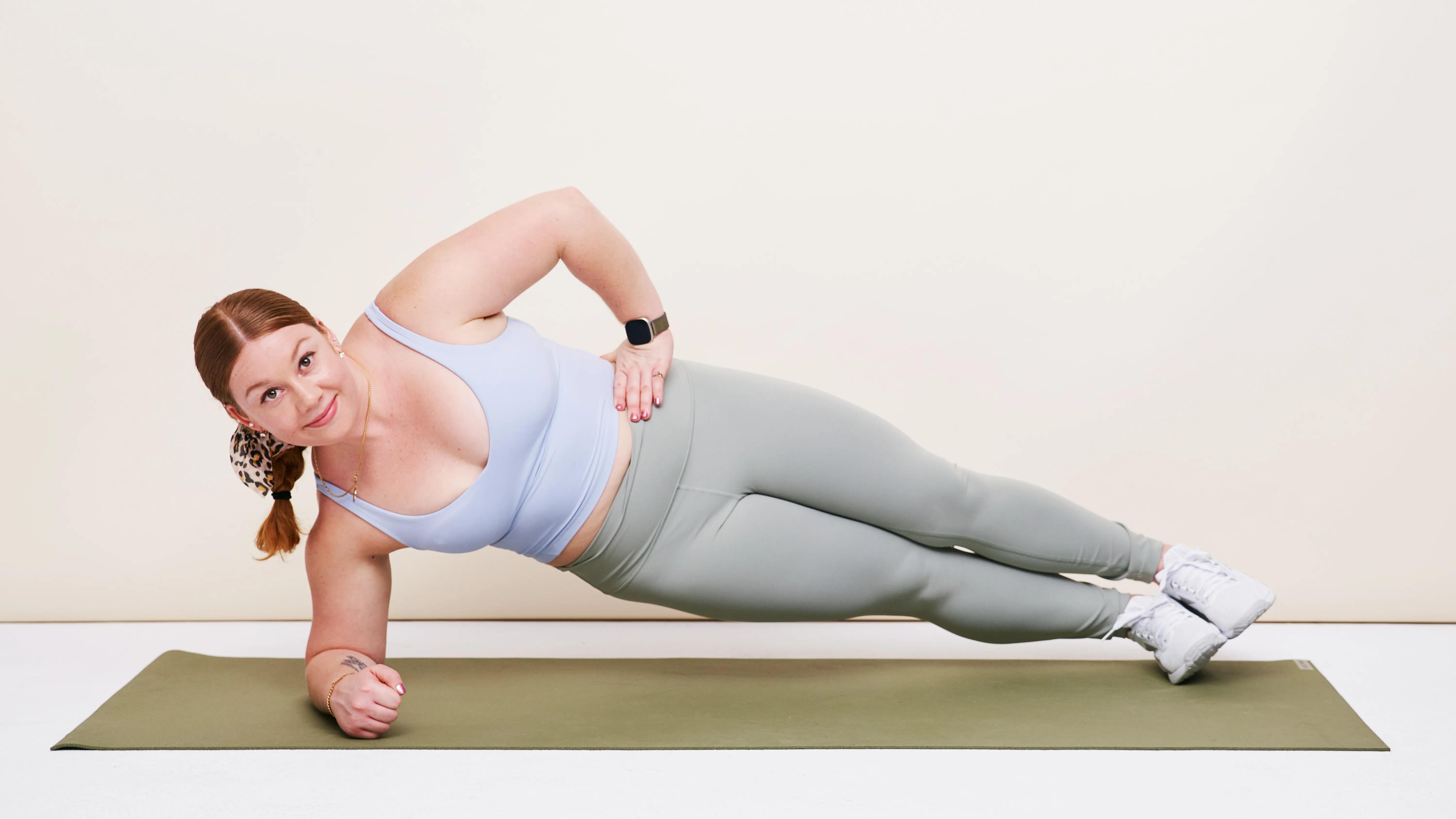
Within this sequence of movements to strengthen the back, the lateral plate is included. This exercise has many variants but, in the case of sciatica, it is best to start by supporting the knees on the ground.
How do you do that?
- On a yoga mat, lie on the side.
- Then he supports the forearm on the ground and lifts the torso. Only the forearm and knees must be left on the floor. You can stretch your arm free up or leave it over the body.
- Hold that posture for 10 seconds and slow down.
- Repeat on the other side.
When you master this technique, you can lift your knees from the ground as well. Only your forearm and feet will be left leaning.
12. High plate

Strengthening lumbar muscles can be an effective tool for reducing back pain, as The Ochsner Journal indicates. For this, the plate or table exercises are among the most suitable.
What are you supposed to do?
- Stand upside down. Support the palms of your hands and knees on the ground. The trunk should be elevated in a straight line.
- You can stay in that position for a few seconds. Now, if you want to add difficulty, lift your knees off the ground as well. In this way, only the palms of the hands and the tips of the feet will remain supported, as in the image.
- Hold a straight posture for 10 or 15 seconds and relax. You can repeat the exercise 5 times.
13. Back extension exercise
The last of these exercises to remove the pain from the sciatica is the back extension. Ideal to work and strengthen the lumbar area. That’s right, follow the step-by-step we’ll take you next so you don’t hurt yourself.
How can you do it?
- Lie face down with my arms stretched over your head.
- To begin with, raise a few inches in one of your arms while doing the same with your opposite leg. Hold that position for 5 seconds and relax.
- Then repeat, but vice versa.
- Perform these moves 10 times. If you don’t notice pain, you can do the same, but by raising both arms and legs, as in the video.
What Do Stretches Do for Sciatica?
In addition to exercises to soothe the pain of the sciatic nerve, stretches are just as important. Stretching the muscles of the back, legs, and hip can help reduce pain, increase flexibility, and improve quality of life.
Here are some ways to stretch before and after the previous routines. You can also do this type of sciatica exercise in bed, before bedtime. At the end of them, you can use compresses for sciatica, as a complement to therapy.
1. Stretching of the abdominals

The stretching of the abdominals will help mitigate the pain of the sciatica that focuses on the core area. This simple movement decreases tension and increases flexibility.
How do you do that?
- Lie down.
- Then he rests the palms of his hands on the ground and lifts the torso off the floor.
- Stretch your back to back as long as you can, but without bothering.
- Hold that posture for a few seconds, inhaling and exhaling, and relax.
2. Stretching for the hip
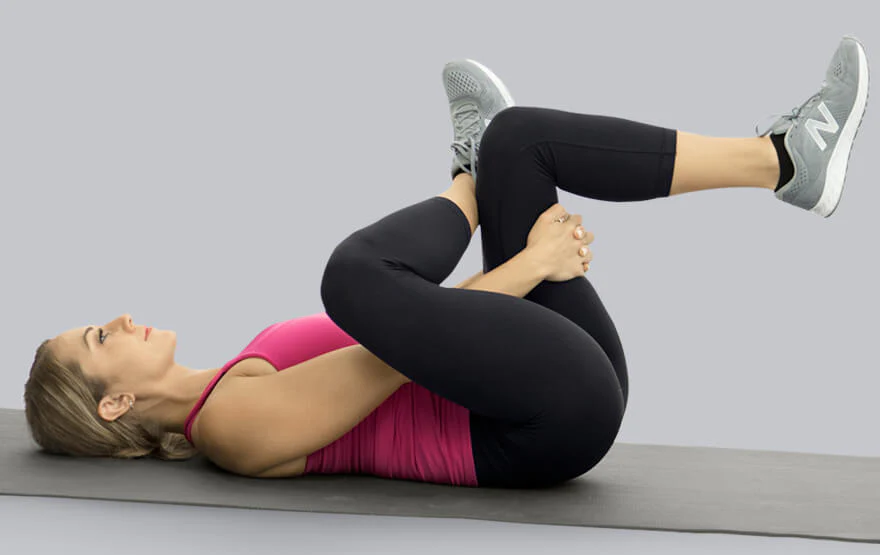
With this leg movement, you will make a stretch of the pyriform muscle and decrease the discomfort that afflicts it because of the sciatica. Follow the step by step.
How do you do that?
- Lie face up on a yoga mat and try to find a comfortable and stable position.
- Then bend your knees and cross one leg over the other.
- Hold underneath another leg and try to get the two closer to the chest.
- Stretch for a few seconds, relax, and exchange the position with the other leg.
- Make 5 to 8 repetitions.
3. Stretching seated

This position favors the relief of sciatic pain because it minimizes the tension of the lower back, buttocks, and legs. In addition, stretching also serves to prevent future injuries when exercising.
How do you do that?
- Sit on the floor, stretch your legs, and make sure you keep your back upright.
- Then cross the right leg over the left, keeping the latter as straight as possible.
- Take your right knee with your left arm, as if you want to embrace it.
- Hold the position for about 30 or 40 seconds and rest.
- Repeat the same action on the opposite side.
4. Posture of the pigeon
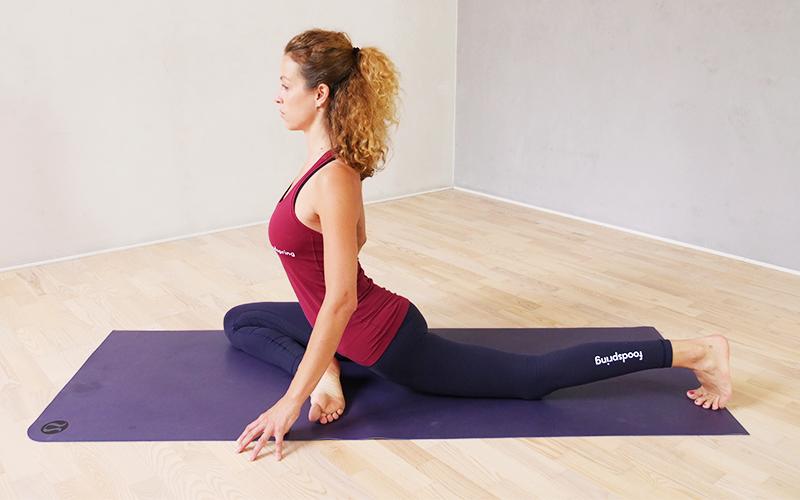
We mention that certain stretches of yoga are good at unlocking the sciatic nerve and relieving pain. This way of stretching the legs is known in yoga as the pigeon’s posture and, in addition to relieving the tension of the back, allows the muscles of the legs to work and tone the buttocks.
How do you do that?
- Sitting, with the right back and the look towards the front, stretch the left leg backward and bend the right forward.
- Lean on the floor with the palms of your hands and make a brief stretch, without folding your back.
- Hold the position for up to 10 seconds, rest, and repeat it with the other leg.
Keep The Activity With These Exercises for Sciatic Nerve Pain
Each of the positions and exercises cited here for the pain of sciatica can be a great therapy against pain, as long as they are done in the right way. Otherwise, they could aggravate the problem. If you have doubts, consult with a coach or doctor.
Likewise, it accompanies these methods to remove the pain from the sciatica with good postural hygiene, both when carrying out activities and when sitting. As a last recommendation, if the pain lasts more than a month or does not improve with exercises or painkillers, you must see a specialist immediately.
